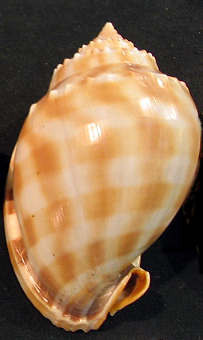
Neogastropoda is an order of sea snails, both freshwater and marine gastropod molluscs.
Orthogastropoda was a major taxonomic grouping of snails and slugs, an extremely large subclass within the huge class Gastropoda according to the older taxonomy of the Gastropoda.

Pulmonata or pulmonates, is an informal group of snails and slugs characterized by the ability to breathe air, by virtue of having a pallial lung instead of a gill, or gills. The group includes many land and freshwater families, and several marine families.

Littorinimorpha is a large order of snails, gastropods, consisting primarily of sea snails, but also including some freshwater snails and land snails.
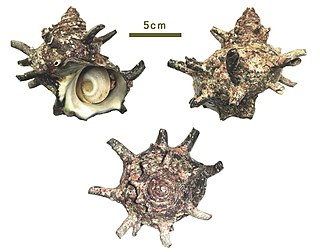
Turbinidae, the turban snails, are a family of small to large marine gastropod molluscs in the superfamily Trochoidea.

The Buccinidae are a very large and diverse taxonomic family of large sea snails, often known as whelks or true whelks.

Basommatophora was a term that was previously used as a taxonomic informal group, a group of snails within the informal group Pulmonata, the air-breathing slugs and snails. According to the taxonomy of the Gastropoda, whenever monophyly has not been tested, or where a traditional taxon of gastropods has now been discovered to be paraphyletic or polyphyletic, the term "group" or "informal group" was used.
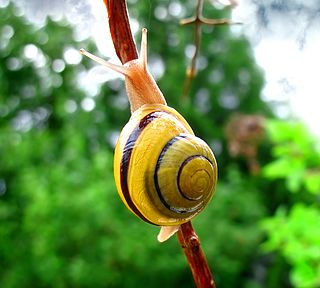
Eupulmonata is a taxonomic clade of air-breathing snails. The great majority of this group are land snails and slugs, but some are marine and some are saltmarsh snails that can tolerate salty conditions.

Planorbidae, common name the ramshorn snails or ram's horn snails, is a family of air-breathing freshwater snails, aquatic pulmonate gastropod molluscs. Unlike most molluscs, the blood of ram's horn snails contains iron-based hemoglobin instead of copper-based hemocyanin. As a result, planorbids are able to breathe oxygen more efficiently than other molluscs. The presence of hemoglobin gives the body a reddish colour. This is especially apparent in albino animals.

Cerithiidae, common name the cerithiids or ceriths, is a large family of medium-sized marine gastropods in the clade Sorbeoconcha.
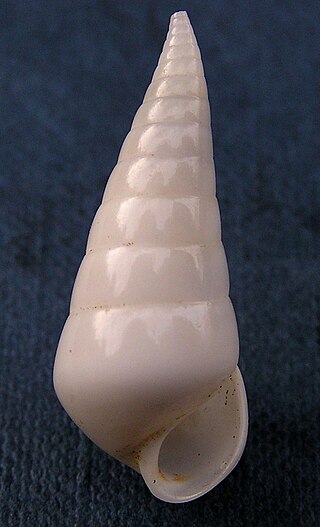
Eulimidae is a family of very small parasitic sea snails, marine gastropod mollusks in the superfamily Vanikoroidea.
The taxonomy of the Gastropoda, as revised by Winston Ponder and David R. Lindberg in 1997, is an older taxonomy of the class Gastropoda, the class of molluscs consisting of all snails and slugs. The full name of the work in which this taxonomy was published is Towards a phylogeny of gastropod molluscs: an analysis using morphological characters.

Apogastropoda was previously used as a major taxonomic grouping of sea snails, marine gastropod molluscs. This infraclass mostly consisted of marine limpets and operculate snails. At least 20,000 species were considered to exist within the two clades that were included, Heterobranchia and Caenogastropoda.

Vetigastropoda is a major taxonomic group of sea snails, marine gastropod mollusks that form a very ancient lineage. Taxonomically the Vetigastropoda are sometimes treated as an order, although they are treated as an unranked clade in Bouchet and Rocroi, 2005.

The Cerithioidea is a superfamily of marine, brackish water and freshwater gastropod containing more than 200 genera. The Cerithoidea are included unassigned in the subclass Caenogastropoda. The original name of this superfamily was Cerithiacea, in keeping with common superfamily endings at the time.
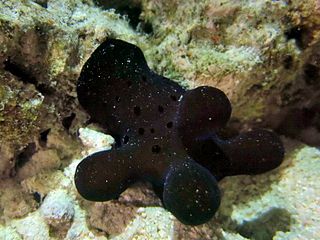
Velutinidae is a family of small sea snails, marine gastropod molluscs in the clade Littorinimorpha.

Truncatelloidea is a superfamily of snails, gastropod mollusks in the clade Caenogastropoda.
The taxonomy of the Gastropoda as it was revised in December 2017 by Philippe Bouchet and eight other authors, is a publication which lays out a newly revised system for the scientific classification of gastropod mollusks. The same work also included the taxonomy of monoplacophorans.

Euheterodonta is an subterclass of Mollusca in the class Bivalvia.
